Split's Most Famous Love Story: Roko and Cicibela
June 20, 2021 - Unlike the tales of Romeo and Juliet or Helen of Troy and Paris, the origins of Split's most famous love story are not shrouded in myth and legend. Instead of knights and nobles, they revolve around a real-life couple - a poor fisherman and his wife who made a home from an abandoned boat in Split's port. Meet Roko and Cicibela.
As any Split fan will tell you, it doesn't take much to be swept away by the city lying at the foot of Marjan Hill. And if you are of the romantic kind, there's nothing like walking hand in hand with your significant other amid the swinging palm trees on the Split promenade, or Riva, as it is known to locals.
I often hear tourists ask for recommendations of ''hidden'' gems and places known only to locals. The history of Roko Ljubica and Dujka Bašić is a perfect example of one such gem, although it has yet to be recognized as a tourist product. A shame, for they were living witnesses of the transformation of Split from a small port town into a modern city at the turn of the century.
What is more, their steps are easy to retrace. Although they left no physicial proof of their existence, the miniature marina where they spent most of their years together, the church where they got married, the streets they walked to buy tobacco and bread and sell fish that Roko would catch - still stand to this day.
Roko Ljubica married Dujka Bašić, a poor illiterate girl from Split's neighbourhood Veli Varoš on February 16th, 1906. The people of Veli Varoš nicknamed her Cicela or Cicibela, meaning a street cat, because much like a street cat, she had no one to depend on but herself.
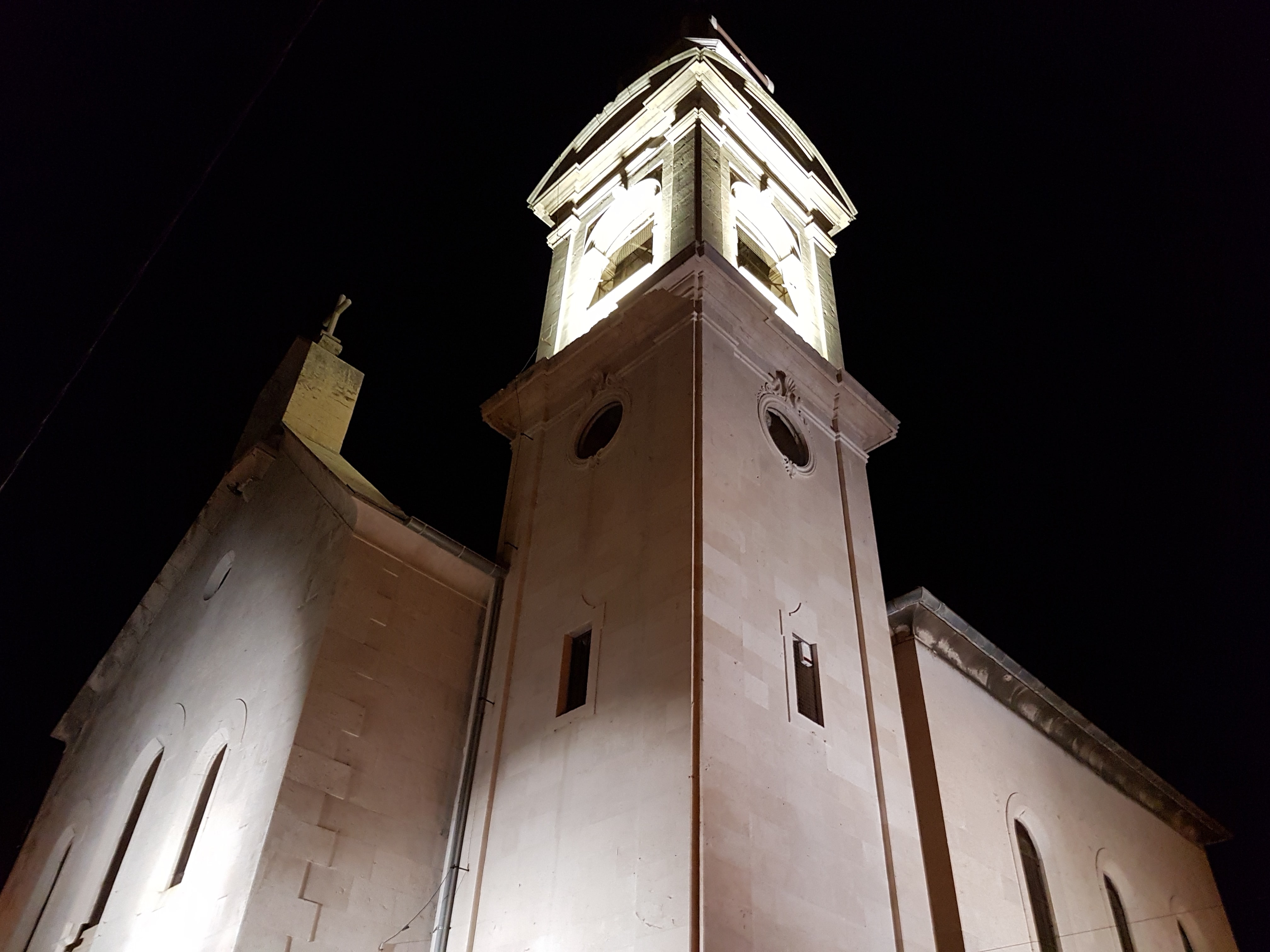
Saint Cross Church (Crkva svetog križa) where Roko and Dujka married in 1906.
As a fisherman, Roko was able to provide for the two of them, but his earnings didn't offer enough to buy them or build them a home. Instead, they lived out their life in a miniature marina of Matejuška, in the Split's port northwest corner, which for decades served as a shelter for fishermen's boats. One such boat served as their home. Abandoned and full of holes, which Roko closed with cement, it was no longer fit for going to sea.
In 1906, what Roko and Cicibela could see from their boat in Matejuška, had they looked toward the promenade in the evening, were not twinkling lights and palm trees. There was nothing but darkness, and on clear and starry nights, the shapes of mulberry trees, which used to grow there. The first palm tree, a plant this city is unimaginable without now, wasn't planted until 1921. Maybe it wouldn't have been at all, as mulberries with their long and firm leaves and branches provide genuine shade. However, in Split of that time, mulberry fruit falling from the trees got trampled over by livestock and carriages which were passing through the port's street every day from the direction of Veli Varoš and caused a foul smell in the summer heat.
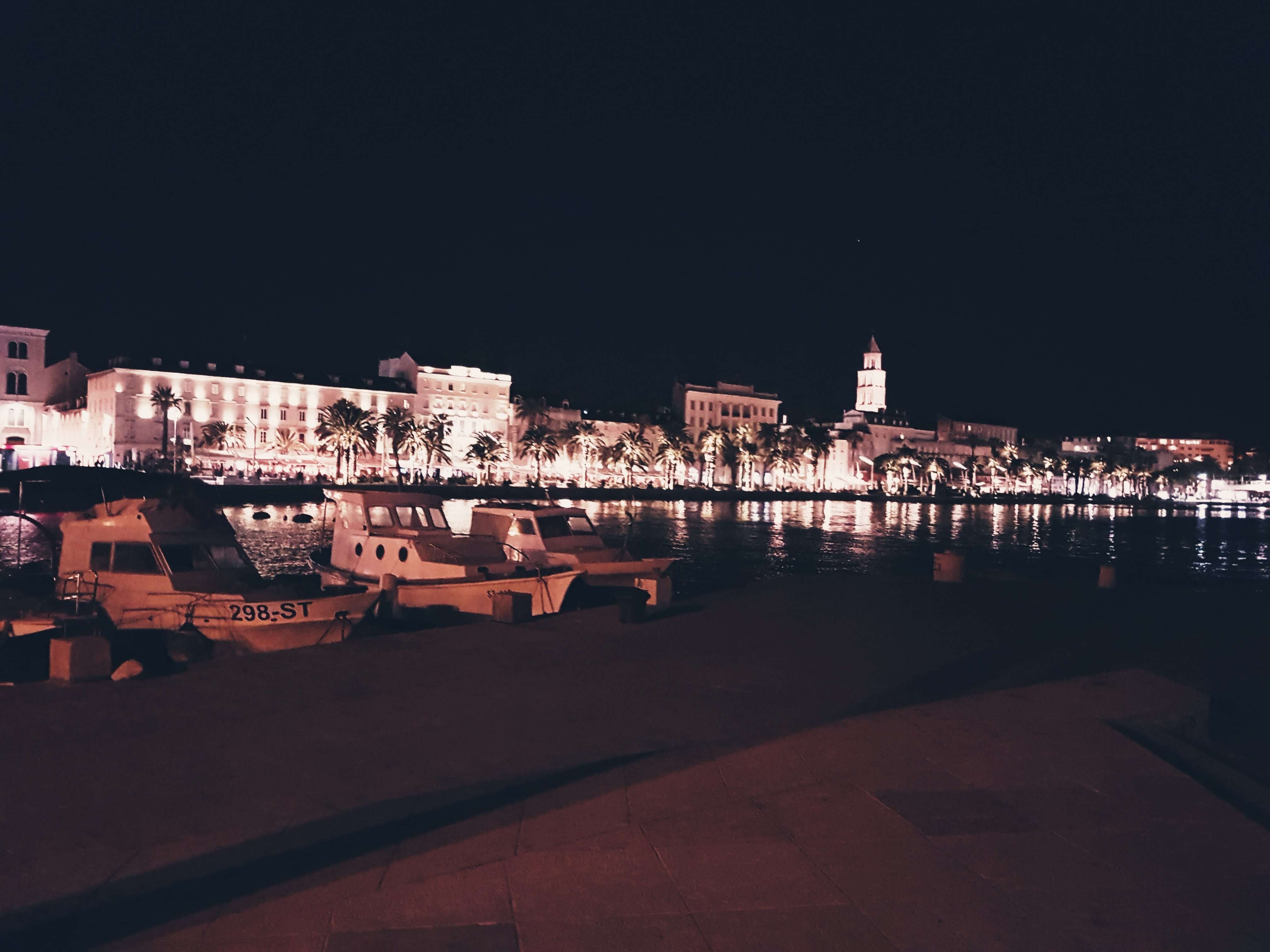
The view from Matejuška to Split's Riva and the eastern part of harbour. The plaque dedicated to Roko and Dujka (Cicibela) can just be seen on the right-hand side as a single dark rectangle amid lighter ones.
Although their boat provided little cover from the elements, especially in the winter, Roko and Dujka continued to live there until the late 1930s - they even adopted a dog named Belina - when the city provided them with a room in an almshouse behind the Vestibul of the Diocletian's Palace.
As posh as it sounds, living near the former imperial residence meant residing in a crowded, noisy, and dirty place, and Roko spoke about it with disdain at any given opportunity. It wasn't a good place for his beloved Cicibela. Split's annals mark that, in the end, the municipality gave in and gave them a small house in Antonova Street, near their former home of Matejuška. It was there that they lived out their last days in the winter of 1936. The exact location of their final resting place remains unknown.
At a first sight, the story of Roko Ljubica and Dujka Bašić is nothing special. In comparison to many other historical figures who walked the streets of Split – from the Roman emperor Diocletian onward, their lives are only a thread in the rich tapestry of Croatia's most famous port city.
And yet, this story of ordinary people who owned little aside from the clothes on their back - continues to awake interest. Their life was also immortalized in several screens and stage pieces thanks to the legendary Split writer and journalist Miljenko Smoje and the song by Oliver Dragojevič Ča je život vengo fantažija (Life's Nothing Other Than a Fantasy).

Ivan Baranović and Monika Vuco playing the title characters in an adaptation of Miljenko Smoje's play Roko and Cicibela © Dusko Jaramaz/Pixsell
Maybe it's the surprise, like the kind Splićani at the turn of the century must have felt at their unusual living arrangements, Roko's contempt for the municipality's failed attempts at charity, or them being content with what little they had. Their peculiar way of life certainly attracted the attention of travelers visiting Split between the two world wars. Thanks to them, we even know what Roko and Dujka looked like. Several years ago, Split photographer and artist Ana Perajica found probably the only photograph of the couple, taken more than 70 years ago.
To this day, the interest in their life remains as strong as ever. Whatever the reason for that may be, the story of Roko and Dujka, or Cicibela, reminds all of us living in the 21st century that happiness has little to do with material possessions and gives us a portrait of two people with an unbreakable spirit, which, many will tell you, is what Dalmatians are all about.
For more stories like this one, CLICK HERE to visit our sections dedicated to travel in Croatia.
For more on travel, CLICK HERE.
Spanish Party Team in Split: Spanish Youth Tries the Croatian Coast
June 2, 2021 - One TCN intern spoke to three people from different regions in Spain about their expat experience in Split.
Croatia is an easy county to adapt to Spaniards because they don't really need to adapt a lot. The climate is similar on the Mediterranean coast and the culture has a common Catholic base. Meanwhile, it's not the same thing and they value their experience from living in Dalmatia.
My Croatian boss told me about his mate, a Split journalist, who once wrote that the best city in the world was... not Split, but San Sebastian located in the Basque Country, Spain. It represents a flagrant case, but in general, as I can see, many Split citizens have the positive impression of Spain - either through business trips, or holidays there, or the Camino - and wouldn't mind moving there for some period of time. I spoke with my Spanish colleagues in Split who have done the opposite move and asked them to compare their life in Spain and in Croatia. They came from different regions of Spain: Estela (28) is from the north-west region of Galicia, Pablo (24) is from the Saragosa, the capital of the north-east region of Aragon, and Jorge (25) is from the south-east region of Murcia.
Jamon or pršut?
"In the cuisine, there are many similarities because of common ingredients of Mediterranian cuisine," Pablo starts and enumerates some of it as olive oil, cheese, vegetables. Some foodstuff is more popular for one region than for others. For example, a homemade meal in Saragosa usually contains dishes with green beans, while in Split, it's difficult to find fresh green beans to cook with at home. In Galicia, people traditionally eat more liquid food or soups, while Dalmatians prefer solid foods like pašticada. 'Ajvar' sauce from red pepper is popular in the Balkans and would probably never become a part of Spaniards’ nutrition if they had not moved to Croatia.
Some differences in nutrition arise from the geographical circumstances, for instance, seafood is more typical for coastal sides of Spain as well as Croatia. Dorada fish is bigger in Galicia in the cold waters of the Atlantic than in Dalmatia in the Mediterranean Sea. Other distinctions stem mostly from the generational gap and personal circumstances. Young generations try to keep healthy nutrition with less meat and more fish in spite of the geographical region they live in. Estela feels closer to this generation than to the older one that cannot imagine the main dish without meat, either in Spain or in Croatia.
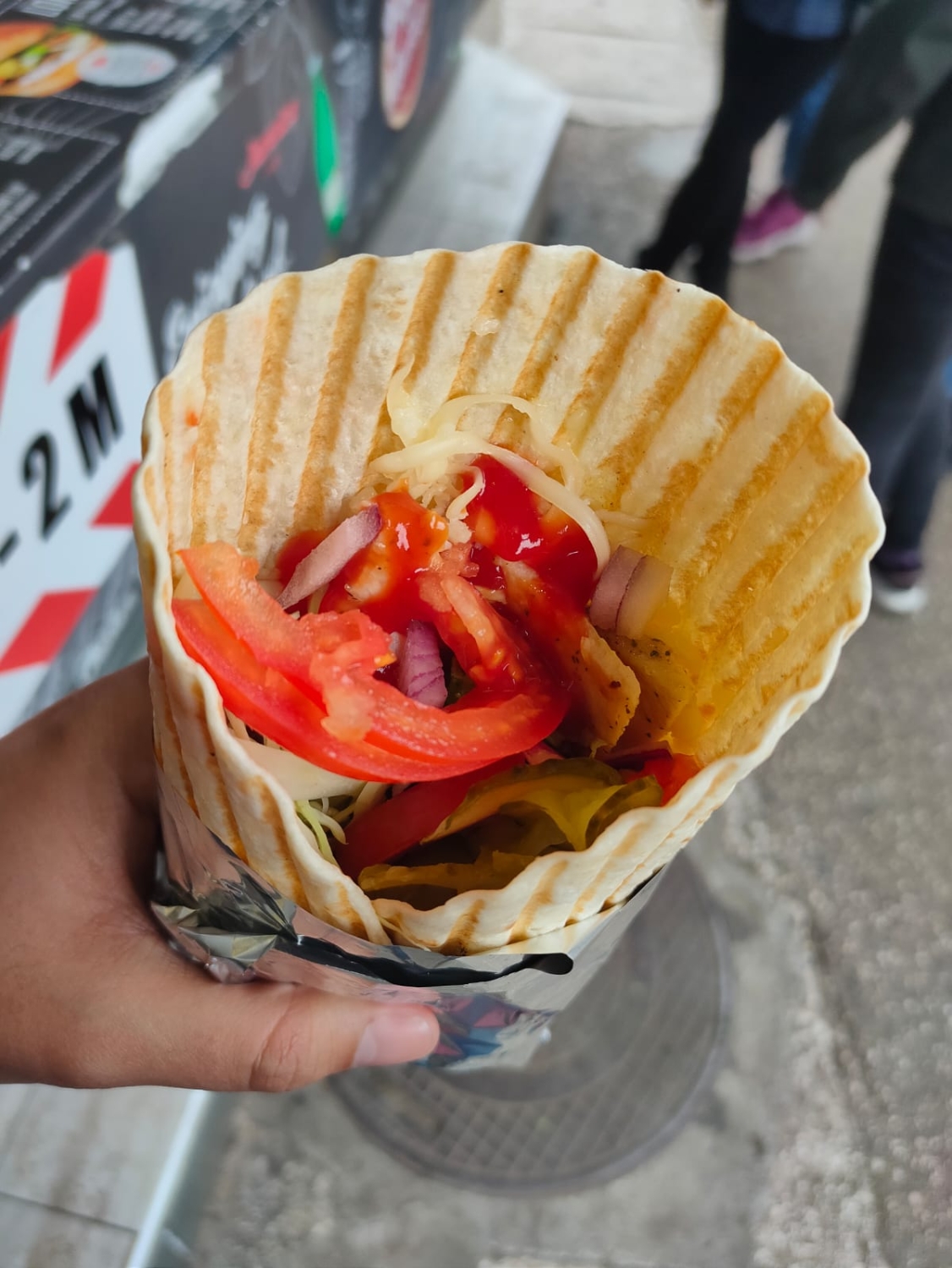
Jorge was surprised by the level of prices in the supermarkets here. It's more or less the same as in Spain, whereas the level of salaries is certainly lower in Croatia. He also misses big chain supermarkets in Croatia like 'Merkadona' in Spain, because it produces some foodstuff under its own brand. Things like 'guacamole' or 'hummus' have a good quality there. However, in Split, there are a lot of products imported from Spain, like 'Lidl' supermarkets with its 'Spanish week', etc. Maybe, you won't find some small local brands of cheese or beer that you're used to in Spain, but you will find an adequate substitution. Looking closer, ‘pršut' is similar to 'jamon', 'kulen' is similar to 'chorizo’, and the like.
Coffee or beer?
Choosing between coffee and beer depends on the time and day schedule for Spaniards. They feel more streamlined in this matter. Breakfast should be before you go to work. A lunch is between 2:00 and 3:00 pm, and dinner is served between 9:00 and 10:00 pm. "In Croatia, people eat when they want!" Pablo and Estela wonder. "Here, people drink more coffee", Estela continues. In Spain, it's normal to have coffee first with your breakfast, to drink one more in the afternoon, and perhaps to have one more coffee after lunch. People usually drink their last coffee at lunchtime, but not at 8:00 pm as people do in Split. Of course, there are some people in Spain who have to work in the evening or have other reasons to drink coffee so late, but most Spaniards prefer beer in the evening.
The culture around having coffee or beer in some public places does not differentiate much. You can enjoy one cup of coffee in a cafe for hours if you're not in a hurry. You can drink coffee quickly and go to work as well. It's typical to have a beer in the evening as people usually finish work, but it's ok to have it even at 1:00 pm as you've already finished your business. Coffee in cafes is a little more expensive than in Spain. Prices for beer in Split bar are also higher, as Jorge and Pablo guess. Estela makes adjustments. A mug of beer is bigger here, and accordingly, the price is higher. In sum, we have more or less the same level of prices in Croatia and in Spain. Also, Split is the second-largest city in Croatia and a tourist city, namely the ‘Croatian Barcelona’. Certainly, in the historic center of Barcelona, a glass of beer costs more money than in some towns in Galicia.
The variety of coffee is broader in Spain. For example, 'cortado' most likely won’t be found in any cafe in Split. Spaniards agree that the quality of coffee is good. Meanwhile, they prefer coffee from the machine or an Italian drip kettle. "Turkish coffee is kind of disgusting to everybody who gets used to Italian coffee," Jorge supposes. A beer in Croatia is less strong than in Spain, however as mentioned, a normal glass or a bottle is 0,5 l instead of 0,33 l. You get less alcohol with a bigger amount. At will, you can get the same thing in Spain. There, if a beer is too strong, people dilute it with sparkling water or lemon juice. In Croatia, nobody does that. But Croatians often dilute wine with sparkling water or ice that seems weird to Spaniards. "If wine is really bad, we do 'sangria' or 'calimontxo' (namely Croatian 'bambus') from it. If wine is good, we never mix it. People would ask why?!” Estela explains to me.
Inside or outside?
Estela and Pablo arrived in Split in late November 2020, a week before the second anti-Covid lockdown. Jorge came in March 2021, a week after cafes and terraces started to re-open after winter quarantine. One might think that Jorge was luckier to come later, but in fact, the Covid restrictions were stronger in Spain than in Croatia. In any case, their experience in leisure time had objective limits because of the Covid-19 pandemic. It's difficult to compare entertainment in your home town and in Split, they say because they haven't seen that touristic crowded loud Split as it was before the quarantine. However, nobody really suffered from the lack of activities here.
Pablo says that when you come for a year, you're more concentrated on the communication with new people you meet here. He was not striving to go to a gym or wherever for any organised leisure time. "I'm not bored now. If I lived here for a longer period of time and had a routine every day, I would probably try. I mean there are some museums, etc." Pablo speculates. Indeed, in this sphere of communication, we were lucky in Split. There are some typical public places for drinking in the afternoon or evening time in every town of Spain, but this kind of social activity is prohibited and the police usually come. Otherwise, Matejuška pier situated on the edge of the Split Riva is open 24h and rarely visited by the police. You can go there almost any time to drink in a company and meet amazing people from all over the world.
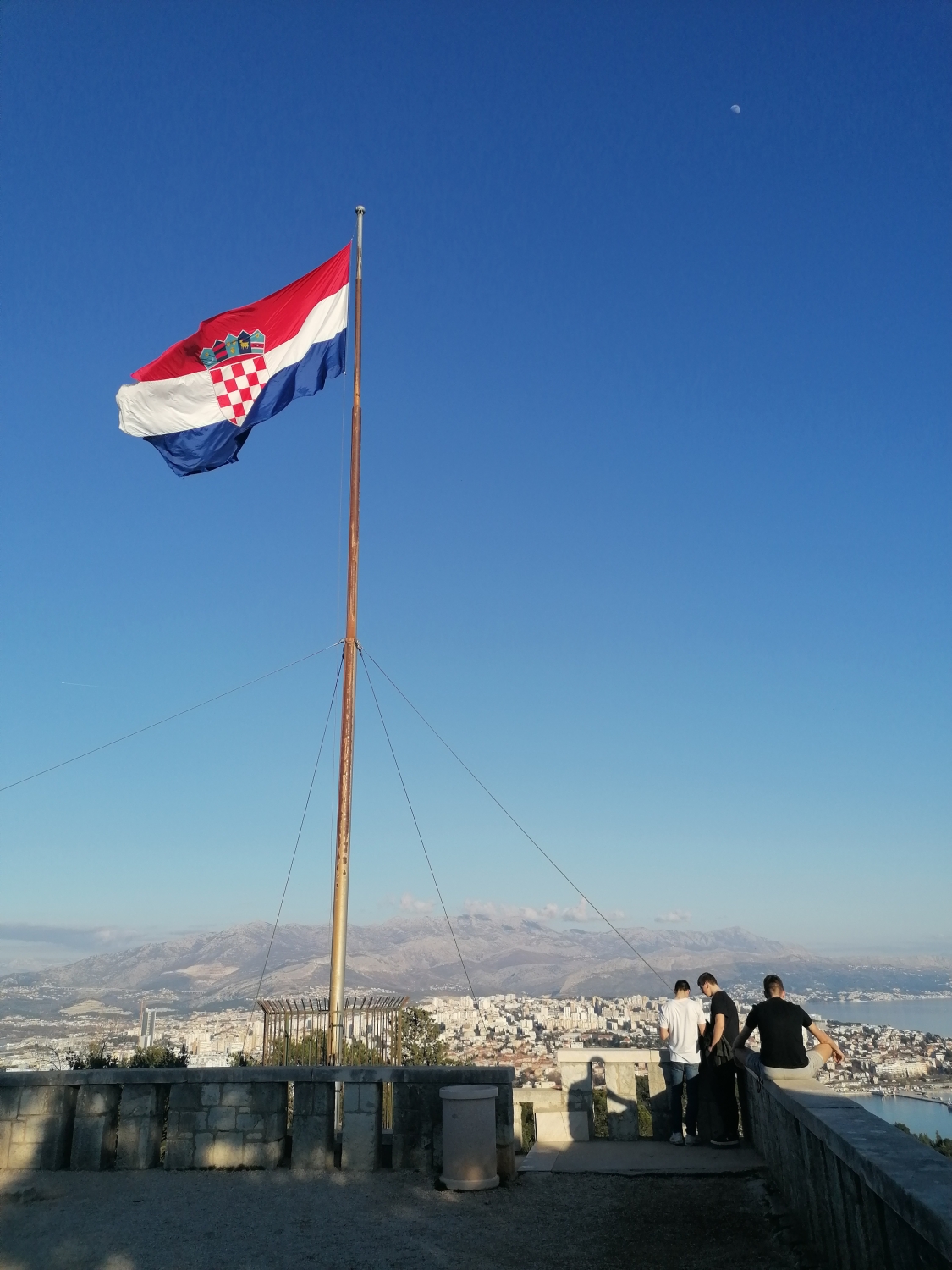
We met people on Matejuška even on the coldest evenings in winter. As a whole, there are fewer activities during the winter and more in summer. Leisure time options in Split are similar to Ferrol, Estela says. As well she prefers to spend leisure time outside. You can go hiking in the mountains or swimming in the sea - fortunately, both options are close to the city. If you fancy it, it doesn't take much time to come by foot to some beautiful nature place in the surrounding area. Split is situated on the hills, nevertheless, the Riva promenade is straight enough for roller-skating and skateboarding. With her friend, Estela found a good place for skating behind the ferry port of Split. Besides roller skates, she also took a slackline and was pleasantly surprised to find another group of slackliners in the city park Sustipan.
They went once to the cinema and theater. In the cinema, it was an American movie - an original version with Croatian subtitles. The fact that cinemas usually show original versions is for sure appreciated by Spaniards. In Spain, movies are mostly dubbed, thus foreigners have little chance to understand the plot. What is even more pleasant, as Estela's local friend shared with her, the summer cinema on Bačvice beach will be showed with double - Croatian and English - subtitles, so foreigners will have all the options.
To speak or not to speak?
My Spanish colleagues as well as I came to Croatia through an international program that affected our community. Almost from the first month, we joined the Facebook group 'Expats meet Split' and it also affected the international diversity of our social circle. Estela speculates: "If I had an ordinary work here, in a public school, for example, perhaps I would have more Croatian friends, and it would be easier to do at the workplace". But anyway, she considers Croats are very open to communication and their way of socialising similar to Spaniards. Croatians are open to suggestions to have coffee together, to go to the beach, to drink a beer in a bar.
Pablo has a more skeptical view of making friends with Croatians. He agrees that Croatians are open people, however, his experience of watching football in the company of Croats suggests that he needed to speak Croatian to have a true Croatian friend. They are nice, they invite you to watch a match together, but finally, they start speaking Croatian to each other and you're out of it, Pablo explains. Estela objects to him. "People of our generation, they speak good English. Of course, if you're in a big company, it'd be better to speak Croatian. If you're in a small company or one-on-one, you would not have problems socialising. You can communicate, speak, explain..."

Learning Croatian is a challenge for people from Spain. The grammar is complicated. There is just a little intersection with Latin, therefore you need to learn totally new vocabulary. There are some words without vocals ('krv' blood, 'prst' finger, etc.) which is difficult to spell, some words with sounds missing in the Spanish language which is also difficult to spell ('ljubav' love, 'izviđači' scouts). Some usual words in Croatian sound funny to Spaniards, because it sounds similar to obscene words (‘koliko puta..." how many times...). Certainly, it would take years to learn Croatian properly. So far, my Spanish colleagues in Split speak mostly English and use a dozen of Croatian phrases on occasion.
Spanish people are everywhere. If you want to find them, you'll find them. However, my Spanish colleagues don't really try to find their countrymen. Jorge shies away from the Erasmus students' society that is kinda well-staffed by Spanish students in the University of Split. Pablo's first preference was an international party, but now he doesn't care whether he will join an international or Spanish party the next evening. Estela said that she tried to avoid Spanish society. "If they start talking with me, of course, I talk... If we are in a big company, I try to move to an international circle... I have enough Spanish friends in Spain."
Pomalo or even more pomalo
As we seek to describe the culture of a region by one word, we likely use 'pomalo' for Dalmatia. In the Dalmatian dialect it means 'take it easy', 'relax', 'slow down', 'put it off until tomorrow, 'we will do it tomorrow, 'we can do it tomorrow... or later'. The Spanish word 'mañana' (tomorrow) has quite a similar context to it. In Europe, these concepts are traditionally associated with southern sloths and laziness. "Europe has a stereotype of us that we are really pomalo, but here there's even more pomalo," Estela shares her impression. Pablo echos her: "Here everybody is so relaxed. It doesn't matter whether you come on Monday morning, or Tuesday morning, the Riva is full of people. And these people are not only tourists!" It looks like nobody works in this city!
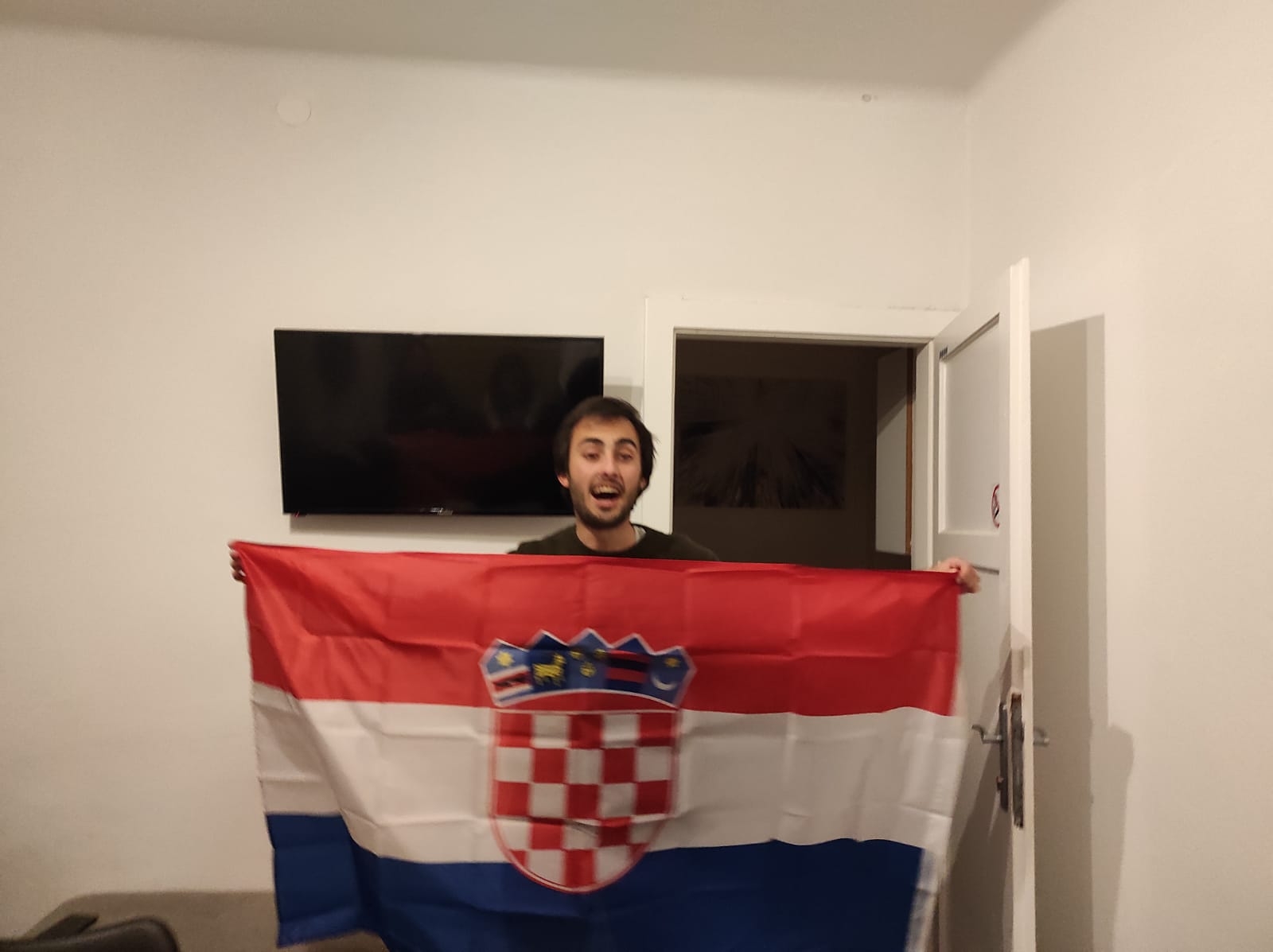
Joking aside, some manifestations of this pomalo mentality at times frustrates my Spanish team. Estela chooses her words to be merciful with our lovely Dalmatia - flexible, not disorganised. Notwithstanding, she would like to see fewer last-minute moves and more long-term plans. Maybe, slowly, but it should come to its objective. The illustrative example is local services. Croatian Post works really slow. Sending something from Spain takes about a month, but in the end, reaches the consignee. One of the bottles was broken, but when they contacted the Croatian Post service, they promised to manage it. Meanwhile, postcards that Estela's mom had sent her via post never came to Split.
Another story has happened with my colleagues during the use of the 'e-bike' service in Split. They bought an annual Croatia subscription in Zadar and should not be charged more. But the bike company began to charge them more for rentals in Split. After e-mailing, the Spanish expats learned that Split (a big tourist city, for economical reasons) and Jastrebarsko (a small town, for a random reason) are excluded from the whole-country subscription. The company returned the money and they changed the subscription to Split only. So, services work, although slowly, whereas you should make contacts and push them, and remind them, but finally, a responsible person helps you, and you get a result. So, you can manage. But, it'd be better to feel more secure from the beginning, wouldn't it?
For more about lifestyle in Croatia, follow TCN's dedicated page.
Opara Decides to Regulate the Drinking of Beverages in Public Areas
November 01, 2020 - At the very end of his term, Mayor Andro Krstulovic Opara, just like his predecessor Ivo Baldasar, has decided to regulate the drinking of beverages in public areas.
A little more than a month and a half ago, this issue was raised at the City Council, and in the meantime, Krstulovic Opara appointed a Commission to draft a Decision banning alcohol consumption in public areas in Split with the task of drafting, more precisely, preparing a draft ban document, which will go to public consultation 30 days before the city hall.
Goran Dlaka, head of the Police Department, Leona Grgic, senior advisor for business management and control of city companies, and Jurica Salinovic, recently appointed chief municipal warden, were elected to the task.
The main problem is to determine whether the ban will refer to all public places or only to some. I think that the direction will go in the way of allowing it Matejuska, ballots, and banning it in front of shops, in close proximity to schools, kindergartens ... they told us from Banovina.
Baldasar's proposal, which didn't reach the councilors three years ago, was a ban on the consumption of alcoholic beverages in public areas, for which a fine of 500 and 250 kuna, respectively, would be imposed.
As we find out, this draft will also serve as a guide.
For the latest travel info, bookmark our main travel info article, which is updated daily.
Read the Croatian Travel Update in your language - now available in 24 languages.
Join the Total Croatia Travel INFO Viber community.
Let's Split: The Amazing Race Discovers Croatia in Season 31 (VIDEO)
June 13, 2019 - The popular CBS series The Amazing Race aired a brand new episode in the United States on June 12, 2019. Namely, the 9th episode of season 31 (yes, you heard that right) titled ‘Let’s Split’ discovers Croatia, and primarily the former home of Emperor Diocletian - Split.
“Teams take a bumpy ride in Split, Croatia and try not to get tongue-twisted reciting poetry while in motion,” writes CBS about the episode, which saw the remaining six teams travel from Brienz, Switzerland to Croatia to begin their mission at Bačvice beach (though they call it Kašjuni in the show).

The episode follows the teams from Bačvice, where they are tasked with serving drinks to groups of beachgoers (who are hiding the Travelocity gnome) at cafe bar Žbirac. From there, the mission takes them to Marjan hill and the famous church built into its cliffs. And the task? Delivering bread, of sorts.
The next stop of the mission is Kašjuni beach, where the competitors chose between two challenges - “Poetry in Motion” and “Washed In from the Ocean”. Namely, the teams could opt for memorizing a poem while riding on a flying tube and proceeding to pronounce it correctly to pass, or snorkeling with metal detectors to find a golden goblet and five coins to get their next clue.
From Kašjuni the team sped to Diocletian’s Palace, where the competitors had to carefully follow the quick-moving formation of 18 Roman soldiers.
To get to the finish line, the teams rowed from the Split port to Matejuška where they were greeted by a group of Dalmatian dogs.
You can see episode 9 in its entirety below.
To read more about lifestyle in Croatia, follow TCN’s dedicated page.
Best Seafood Restaurants in Split? Look No Further!
Split, being the second largest city in Croatia, has an incredible amount to offer. From Diocletian’s Palace, to idyllic isles, and maybe most importantly: street lined restaurants selling succulent seafood.
It’s hard enough to decide where your next meal will be in Split, with a plentitude of options and a cheerful maître d' awaiting your arrival, it can get increasingly overwhelming. Because we encourage you to live like Dalmatian’s do when you’re in our city (all about relaxing) and because we know Split like the back of our hands, we’re here to narrow this down for you simply. Here are two of the best seafood restaurants in Split, for those nights you’re in Split and well, you want seafood!
Matejuška: An Open-Air Hangout in Split
Matejuška is a small fisherman’s port just west of Riva. A pleasant walk along Matejuška provides the best vantage point of Split’s seafaring culture as locals from the Veli Varoš neighborhood prepare their catch along the long pier in the morning and catch up for a chat on the benches. At the end of the pier is a wind compass sculpture showing the winds of the region. In the last century, this port was a shipyard.
Matejuška has developed a cult status amongst youth and is probably the biggest open-air hangout in Dalmatia for almost all subcultures of society; hipsters, punk rockers, rock n’ rollers, alternatives, as well as main streamers. The youngsters like to find a spot on the wall and enjoy a cold beer bought in a nearby kiosk or a bottle of cheap local wine brought from home. Matejuška provides a completely laid back vibe where friends enjoy a chat, listen to a tune on their phone and just take in the city skyline as they observe the varying crowds walk by.
Matejuška attracts the crowds from May onwards when the weather warms and has been known to host quite a few free concerts throughout the summer season. Street musicians and practicing klapa groups also come here to keep the vibe going.
There are a few insider tips if you want to blend in with the Matejuška crowds. Firstly, some groups have become accustomed to their regular spot and other groups are aware of that so they leave the spots free for when the ‘regulars’ come. Another thing to observe is how the further down the pier you walk, the more alternative the crowd becomes. Also, there are three ‘bottle collectors’ who reign over Matejuška and they are quick to snatch your empty bottles so they can exchange them for cash. The most popular guy is known as Božo Transporter who is quick and has developed a whisk technique in collecting bottles. The other two are a couple of elderly ladies who sometimes snatch your unfinished drink when they think you are too slow in providing empty bottles. I reckon these ladies are probably the only in their age group who get to go out every Friday and Saturday night until 4am, hanging out with youth J…perhaps it keeps them young.
So if you want to mingle with Split youth in a laid back atmosphere on a zero budget, head to a wall along Matejuška.


